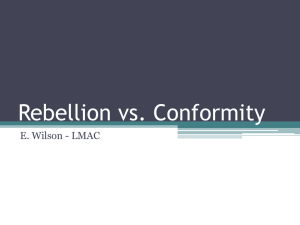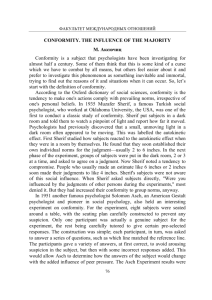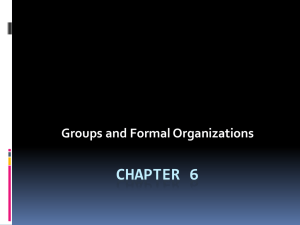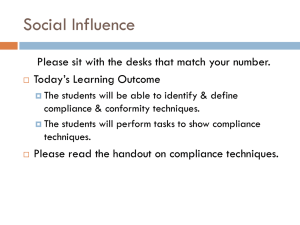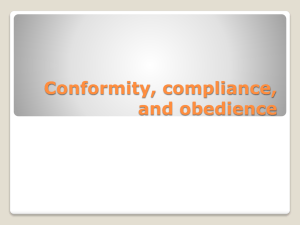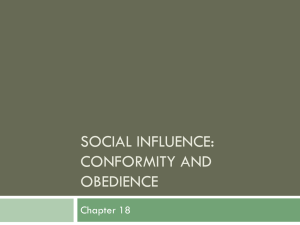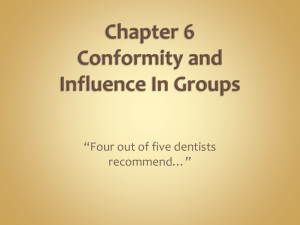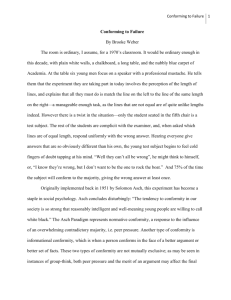Sociocultural L.O.A: Social and Cultural Norms Continued . . .
advertisement
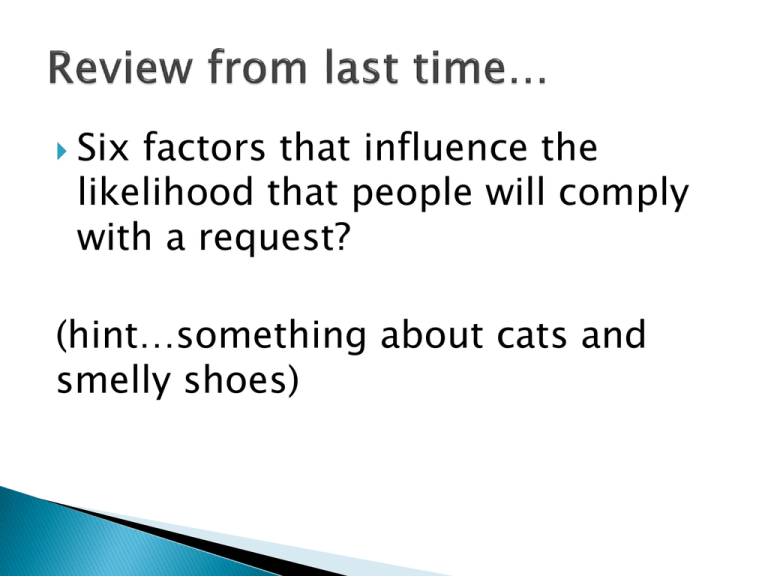
Six factors that influence the likelihood that people will comply with a request? (hint…something about cats and smelly shoes) What are the four compliance techniques we talked about? Describe each of them and a study that goes with each one. Socio-cultural Cognition (4.1) 1. Describe the role of situational and dispositional factors in explaining behaviour. 2. Discuss two errors in attributions. (for example, fundamental attribution error, illusory correlation, self-serving bias). 3. Evaluate social identity theory, making reference to relevant studies. Social Norms (4.2) 1. Explain social learning theory, making reference to two relevant studies. 2. Discuss the use of compliance techniques. ( for example, lowballing, foot-in-the-door, reciprocity) 3. Evaluate research on conformity to group norms. . Discuss factors influencing conformity. (for example, culture, groupthink, risky shift, minority influence). Cultural Norms (4.2) 5. Define the terms culture and cultural norms. 6. Examine the role of two cultural dimensions on behaviour. (for example, individualism/collectivism, power distance, uncertainty avoidance, Confucian dynamism, masculinity/femininity). 4 4. Explain the formation of stereotypes and their effect on behaviour. 7. Using one or more examples, explain emic and etic concepts. One of the key ways that a society or culture passes down its values and behaviours to its members is through an indirect form of social influence called conformity. Conformity: Yielding to group pressure; adjusting one’s thoughts, feelings, behaviours in agreement with someone else or with a social norm Often, the term "peer pressure" is used to describe the conformity seen in schools, but conformity occurs at all levels of society and is not always simply about the need to fit in with a group of friends at school. Asch’s (1951) Classic Conformity Study: Let’s watch! . . . (and no, their clothing is not the I.V of the experiment, ‘Its just a sign of the times man!’) . . . http://www.youtube.com/watch?v=TYIh4Mkc fJA&feature=PlayList&p=87DC40DB5D97852 A&playnext=1&playnext_from=PL&index=12 Using pages 120/121 of your text book, and/or the OneNote document to complete a summary and evaluation of Asch’s famous 1951 conformity experiment. GMEC et al…. Don’t forget to consider alternative explanations . . . Hint, be sure to read and include, where you see fit, the bottom of page 121 – Moscovici and Lage (1976). What influences the likelihood of conformity? ◦ (Great Under-Cover Spies) 1. Group size: 1 confederate = 3% conformity 3 confederates = 32% conformity (Asch 1955) 2. Unanimity: conformity most likely when all confederates agreed (Asch 1956) 3. Confidence: feelings of competence decrease likelihood of conformity. Perrin and Spencer (1988) – replicated Asch’s study with engineers and medical students 4. Self-esteem: high self-esteem reduces conformity Artificiality/low ecological validity Demand characteristics Lack of cultural diversity (may just represent U.S. in 1940s and 1950s) Ethic concerns: deception & anxiety

